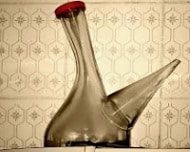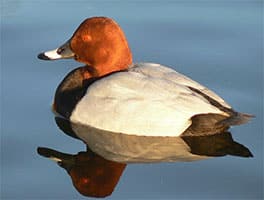 The dictionary of the Royal Spanish Academy ( RAE ) defines the pochard as a container with a voluminous belly that is used to store water. The term can also refer to a container used in several regions of Spain that allows wine to be drunk through a fairly extensive pouring spout .
The dictionary of the Royal Spanish Academy ( RAE ) defines the pochard as a container with a voluminous belly that is used to store water. The term can also refer to a container used in several regions of Spain that allows wine to be drunk through a fairly extensive pouring spout .
This last type of porrón has its antecedents in the Roman Empire . It is a domed vessel with a spout or spout that allows its contents to escape in jets . In this way, with a porrón it is possible to share wine without using glasses or glasses and without the receptacle coming into contact with people's mouths.
In Argentina , the concept of porrón is linked to beer . While in certain areas it is used to refer to a one-liter bottle, in Buenos Aires a beer bottle of approximately 330 cubic centimeters is called porrón.
These pochards, therefore, are individual. A person can drink a porrón to accompany some slices of pizza , to mention one possibility.
Another use of the notion of pochard appears in the field of zoology , with reference to different kinds of birds. The members of the genera Bucephala and Aythya are indicated as pochards: common pochard , crowned pochard , American pochard , osculated pochard , crested pochard , Icelandic pochard , collared pochard , etc.
Beyond their differences, pochards are ducks : aquatic and palmiped birds. They have short legs with the fingers linked together by a membrane.
In Eurasia and Africa we find the common pochard , which is also known as the European pochard . It belongs to the Anatidae family and is an anseriform bird, an order whose name means "goose-shaped." It is a diving duck whose head is triangular in shape (one of its most obvious characteristics), and its neck is of limited extension.
 Its total size is considered medium compared to other similar birds: its extension is between 42 and 49 centimeters, while the span of its deployed wings ranges from 72 to 82 centimeters. Regarding their sexual dimorphism (those physical differences that allow us to distinguish the male from the female), we can highlight that:
Its total size is considered medium compared to other similar birds: its extension is between 42 and 49 centimeters, while the span of its deployed wings ranges from 72 to 82 centimeters. Regarding their sexual dimorphism (those physical differences that allow us to distinguish the male from the female), we can highlight that:
* the neck and head of the male exhibit a reddish brown color;
* the male's plumage is mainly light gray, except for his chest, tail and the upper part of his mantle, which are darker;
* the base of the male's bill has a dark stripe, followed by a whitish gray area and a black tip;
* the iris of the male's eye is red;
* the front part of the female is brown. This includes your head, neck, and chest. Its rear part, however, is grayish brown, with certain lighter parts of its face, especially behind the eye ;
* the gray area of the beak is less extensive in the female;
* the female's eyes are brown.
Although it is correct to say that the European pochard resembles the American pochard, mentioned above, there are certain differences that specialists easily notice: the American pochard is larger, the black part of its beak is less extensive and the iris of its eyes It's yellow.
The appearance of the European pochard is also compared to another North American species, the coacoxtle (also called white-backed or bill-billed pochard ), although it has a longer beak and neck and its beak is completely black. In fact, there is only one other European pochard whose plumage is really similar, the red duck , although the male's wings are brown, its head (larger) has a rounded shape and its beak is red or reddish, depending on the season of the year. .
